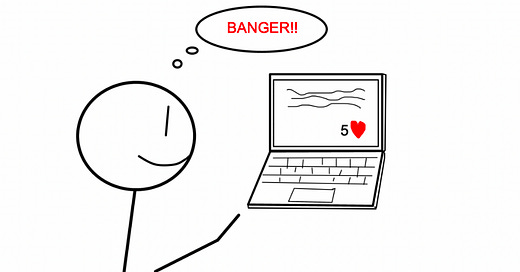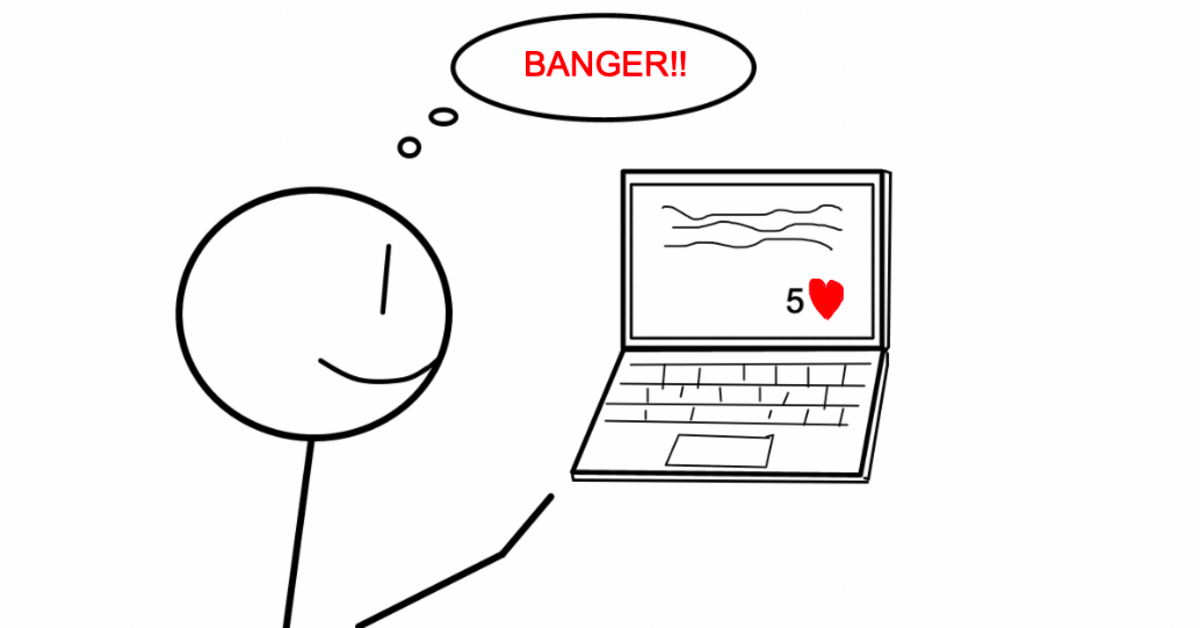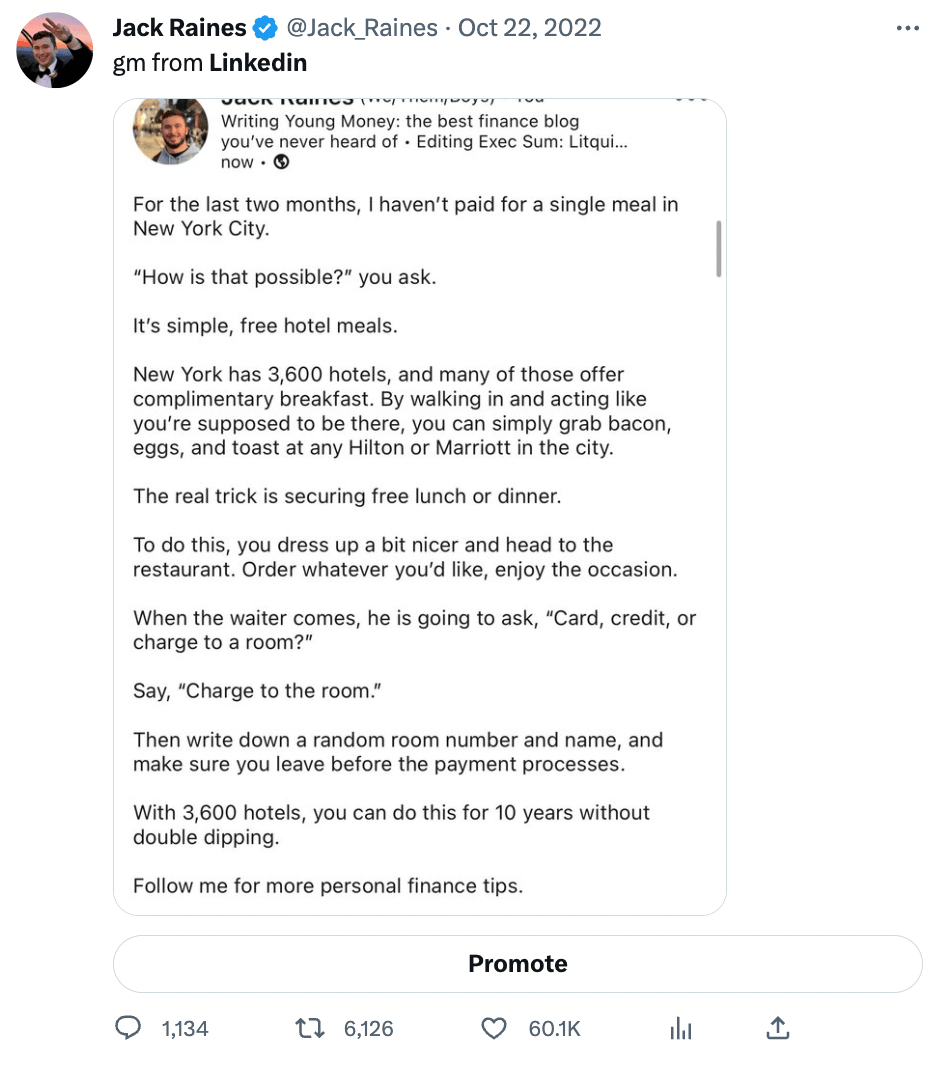Welcome to Young Money! If you’re new here, you can join the tens of thousands of subscribers receiving my essays each week by adding your email below.
The most common surgical complication isn’t internal bleeding, failed procedures, or ineffective rehab. It’s the prolonged use of opioids post-surgery.
This phenomenon shouldn’t be all that surprising. After surgery, patients are in extreme pain. To ease that pain, doctors prescribe painkillers such as OxyContin. OxyContin alleviates that pain by inducing dopamine releases, where “feel-good” chemicals flood our brains.
Dopamine is naturally released when we engage in pleasant experiences such as eating nice food and having sex, and this process served our prehistoric ancestors well as it motivated them to both find food and procreate.
Shout out to 200,000 years of dopamine-fueled sex, I wouldn’t be here without you 🤝
Our ancestors had to work for their dopamine: that deer wasn’t going to hunt itself, after all! But OxyContin commoditized dopamine. Now we’re just one pill away from our next dopamine hit, and we really, really like those dopamine hits, so many patients keep taking painkillers long after they’re needed.
So yeah, painkiller addiction is a problem. But medicine isn’t the only place you’ll find commoditized dopamine. We also have high-sugar processed foods, pornography, and social media, to name a few.
My two cents? Social media is the internet’s OxyContin.
Over the last year, I have gotten really good at one thing: going viral on the internet.
The whole process goes something like this: At least once a week, I wake up, think of the most ridiculous “hustle culture” scenario possible, and publish that ridiculous scenario, positioned as financial or entrepreneurial advice, on Linkedin. If I really want to juice it up, I’ll then take a screenshot of that Linkedin post and post it on Twitter, because Twitter folks understand that I’m making fun of Linkedin, and everyone on Twitter hates Linkedin.
Every single time I do this, 95% of readers find it funny as they realize I’m making fun of the Linkedin “grind” subculture, while the other 5% completely miss the satire and angrily tell me, “You’re a piece of sh*t.”
It turns out that the formula to maximizing engagement without resorting to cringe content is simply using fine-tuned satire that I know some people will openly disparage when they miss the point. Loud minorities are one hell of a growth flywheel.
The influx of comments and likes pushes my post to people’s timelines, where many of them engage with the post, and this engagement flywheel often launches me past 1,000,000+ impressions.
Going viral is cool. It’s awesome getting thousands of likes and comments and new followers. It’s funny when my friends show me texts from their friends saying, “Do you know this Jack Raines guy? His Linkedin is insane.” I can grow my blog quickly (and at no cost) by driving traffic through viral social media posts instead of paid advertisements. So yeah, going viral is cool, but here’s the thing they don’t tell you about going viral: it’s freaking addicting.
Most social media sites are free, but nothing is really ‘free.’ When a product or service is free, you, the user, are the product. In the case of free social media platforms, advertisers are their customers.
How do social media platforms make more money? By keeping their users engaged on the platforms longer so they are exposed to more ads. Broadly speaking, they accomplish this by pushing content that gets heavy engagement onto our newsfeeds, which is why our timelines are filled with memes, politics, hot takes, and controversy.
On the individual level, social media sites keep us engaged through the notification icon. Think about the last time you posted a new photo on Instagram. You close your phone, but your screen lights up with “_____ liked your photo” over and over again. That notification icon is irresistible, and you have to click it to see who else blessed you with a “like.”
Even if you mute your lock screen and popup notifications, the temptation to check the app becomes unbearable after a few minutes as you wonder if your friends from college, your ex-girlfriend, or the new guy you’ve been crushing on threw you a like.
Next thing you know, you’ve spent half an hour checking your Instagram notifications every 47 seconds.
This isn’t some coincidence. Scientists figured out how to induce dopamine releases with drugs, and software engineers have achieved the same result with their websites and apps. Social media “likes” are like dopamine microdoses: you feel a hint of satisfaction every time someone double-taps your photo or tweet.
This is all part of a cycle that entices users to continue posting new content, which gives their followers more stuff to engage with, which further entices said users to post even more content, which… you get the idea.
The late biologist and Harvard professor Edward Wilson once said, “The real problem of humanity is the following: We have Paleolithic emotions, medieval institutions, and godlike technology.”
Ain’t that the truth? Human beings evolve slowly. Technology evolves rapidly. Our operating systems are 200,000 years old, and we aren’t equipped to hold our own against the technology that we’ve created. The dopamine receptors that kept our cave-dwelling ancestors alive have made us slaves to our phones.
I feel this on both sides as a writer. Writing is hard because it requires deep, concentrated thinking that can only be achieved by entering what I call “flow state.” It takes time to reach this flow state, and if my concentration is broken, it can take a good 30 minutes to regain my traction.
Social media is exactly the type of distraction that will ruin your flow state. And social media is a slippery slope. An innocent visit to Twitter dot com to find content that I want to reference in a blog can quickly become a 30-minute time suck, and writing while a tweet or Linkedin post is going viral is basically impossible because I feel damn-near compelled to check its performance every few minutes. And I am 100% aware that all of this is happening in my head, but I am still helpless to prevent myself from getting sucked back in.
Social media really is the OxyContin of the internet.
I tried to fight it for a while, but like a drug addict who tries to stop cold turkey, I relapsed time and time again. So instead of trying to overcome my social media addiction with sheer willpower, I decided to remove the temptation entirely.
A few months ago, I found a website called “Freedom” that allows you to block different sites and apps on your computer and phone for a specified amount of time. Even if you reset your device or delete Freedom, you still can’t access the blocked sites until the time is up. Now, when I impulsively try to view Twitter or Linkedin, the screen just fills up bright green.
It’s perfect.
I’ve also removed Twitter and Linkedin from my phone entirely, because I found myself absentmindedly checking them while riding the subway, walking around town, or sitting in class. It was just plain unhealthy.
I hesitated at first, worried that I would fall behind. “What if I miss an important DM or forget to reply to someone?” But I figured I would give it one week and then reevaluate. I quickly realized that I didn’t have to be terminally online to stay on top of everything, and I could catch up on literally everything I missed that day in less than 20 minutes. As far as missing something “important,” if the issue is serious enough, someone can call me. If it’s not, I can reply later.
Dopamine cycle = escaped.
For most of human history, we lived in a world defined by scarcity: could we accumulate enough resources to survive the day?
But now? We are drowning in an abundance of everything. A tsunami of notifications and distractions and a million intrusive everythings vying for our attention.
When we have access to a near-infinite fountain of entertainment and distractions, the ability to focus and avoid distractions is one hell of a competitive advantage. You can’t beat your dopamine addiction, but you can starve it.
Take it from someone who lives on the web, it’s okay to unplug a bit.
- Jack
I appreciate reader feedback, so if you enjoyed today’s piece, let me know with a like or comment at the bottom of this page!
Young Money is now an ad-free, reader-supported publication. This structure has created a better experience for both the reader and the writer, and it allows me to focus on producing good work instead of managing ad placements. In addition to helping support my newsletter, paid subscribers get access to additional content, including Q&As, book reviews, and more. If you’re a long-time reader who would like to further support Young Money, you can do so by clicking below. Thanks!
Jack's Picks
I enjoyed Nick Maggiulli’s breakdown of lessons he learned from writing and publishing his first book.
The New York Times covered the insane story of WSJ journalist Evan Gershkovich being unfairly jailed in Russia.





